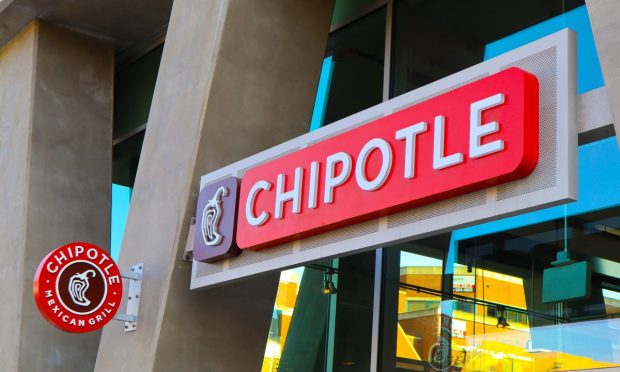Chipotle: Loyalty Launch Will Help Canada Fandom Catch up to US

With many major United States restaurant brands’ rewards programs now well established with their domestic customers, some chains are turning their focus to international markets, looking to apply the learnings from their U.S. programs to drive loyalty around the world.
Fast-casual chain Chipotle Mexican Grill, for one, which has more than 3,000 restaurants across five countries, announced June 14 that it has launched its Chipotle Rewards loyalty program in Canada.
Read more: Restaurant Brands Reach for International Loyalty with Rewards Rollouts
Jason Scoggins, senior director of loyalty and CRM (customer relationship management) at Chipotle, explained in an interview with PYMNTS how the brand is approaching adoption differently in the Great White North than in its home country.
“When we launched Chipotle Rewards in the U.S., we had 26 years’ worth of superfans eager to sign up,” Scoggins said. “In Canada, Chipotle is still an emerging brand, so I don’t think we’ll see the pent-up demand we saw with our U.S. launch.”
Still, he noted: “We see tremendous opportunity to create super-fandom in Canada through Chipotle Rewards.”
The brand initially launched its loyalty program in the U.S. in March 2019, a year before the rush to offer rewards to digital customers seen during the early stages of the pandemic, as brands sought to drive eCommerce, off-premise sales.
North vs South
With significant variations in how consumers engage with restaurants’ digital platforms both from country to country and even from one region of a given country to another, expanding loyalty programs internationally requires sensitivity to how consumers in each area behave.
“We spent a lot of time researching the Canadian market and benchmarking some of the best loyalty programs in the country before we began designing what Chipotle Rewards would look like in Canada,” noted Scoggins.
He added that the differences between Canadian restaurant customers’ behaviors and those of U.S. diners are “subtle,” and that, as such, the two programs “look very similar on the surface,” although the Canadian program uses a “slightly tweaked” data model relative to its U.S. counterpart.
Chipotle is certainly not the only restaurant brand to take advantage of the similarities between the two countries’ restaurant customers. Take, for instance, Tim Hortons, which has a greater hold on customers in its home market, Canada, but which has applied knowledge of its domestic customers to drive loyalty in the U.S.
“The Tims U.S. market is a little earlier on its Tims Rewards journey, but we’ve benefitted so much from the learnings in Canada, and we’re now leveraging the experiences there to drive our focus on bringing new guests into the program and winning long-term loyalty,” Allison Matheson, Tim Hortons U.S. senior director of digital experience and loyalty & marketing, told PYMNTS in a February interview.
Read more: Tim Hortons Says Loyalty Programs Open Customer Channel Beyond the Restaurant
By the Numbers
In the U.S., nearly one in three restaurant customers use loyalty programs each month, according to data from the March/April edition of PYMNTS’ Digital Divide series, “The Digital Divide: Regional Variations in U.S. Food Ordering Trends and Digital Adoption, created in collaboration with Paytronix. The study, which drew from a survey of more than 2,500 U.S. adults who regularly purchase food from restaurants, found that 30% of those surveyed had used a loyalty program in the prior 30 days.
See more: New Research Shows That Regional Dining Quirks Matter in Tailoring Restaurant Offers
Additionally, if U.S. consumers are any indication, loyalty programs are the single most in-demand feature when it comes to driving purchasing. Research from the 2022 Restaurant Friction Index, also a PYMNTS and Paytronix collaboration, found that 43% of diners said they would be more inclined to purchase from restaurants that offer loyalty rewards, a greater share than said the same of any other restaurant feature.
Read more: New Data Shows Digital Loyalty Programs Are Key Differentiator for Top-Performing Restaurants
The New Loyalty Experience
As restaurant loyalty programs expand around the world, and restaurant customers gain access to more options for how they would like to be rewarded for their spending, their expectations from these loyalty programs are evolving.
“A traditional program based purely on transactional behaviors just isn’t going to cut it with consumers going forward,” said Scoggins.
He said a flat points-per-dollar model is no longer enough to keep consumers engaged, but rather restaurants must now offer “a personalized experience” that includes “touches of gamification” to set their offerings apart.
“Loyalty programs today need to go beyond the transactional ‘earn and burn’ programs of the past,” Scoggins said. “In many cases, loyalty programs are companies’ only opportunity to build a connection with their customers, and consumers expect more from a brand if they are going to open themselves up for that connection.”
